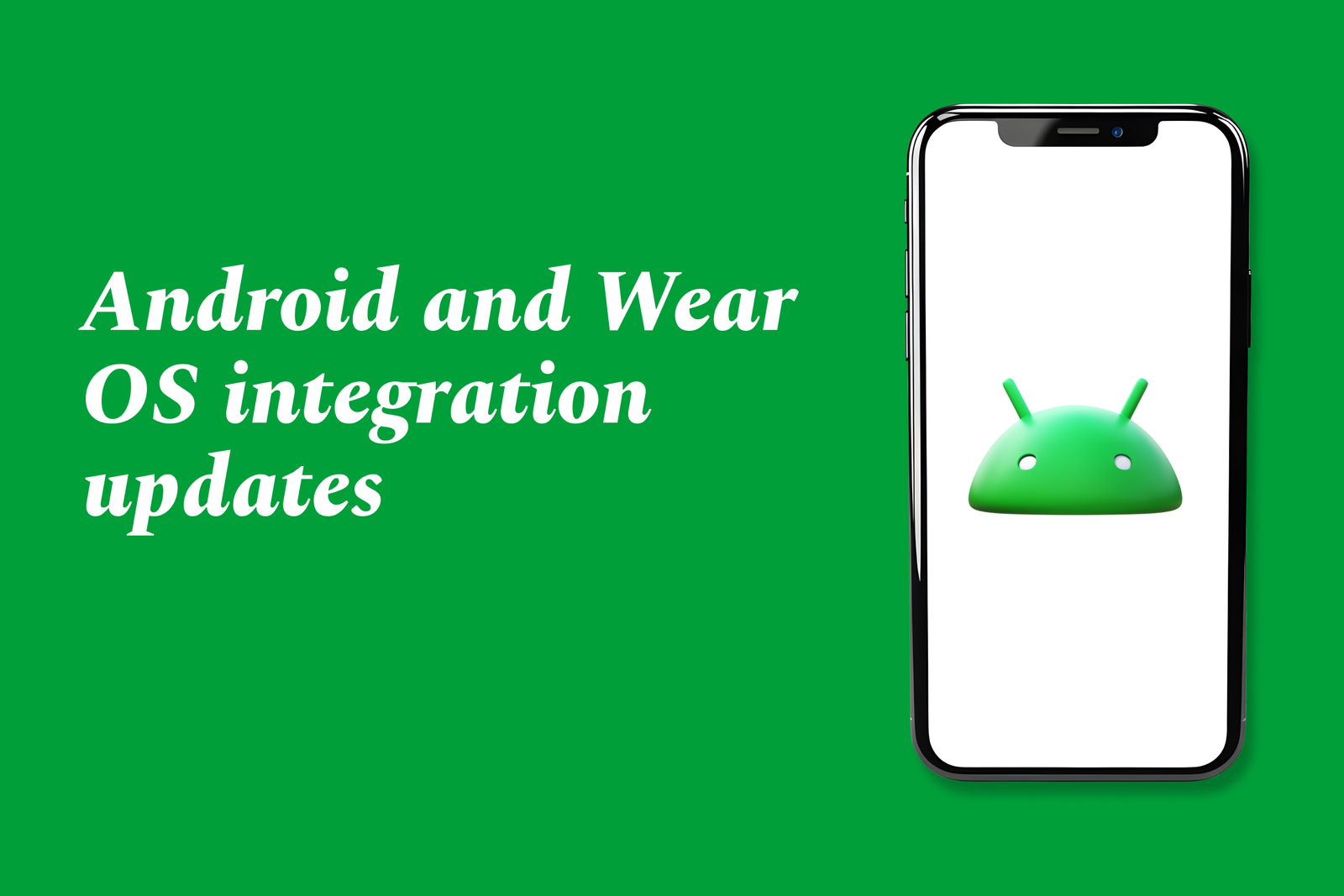Android and Wear OS Integration Updates
Google’s latest Wear OS 6 update enhances Android and Wear OS integration by introducing a new Material 3 Expressive design, improved battery efficiency, dynamic theming, and optimized components tailored for round smartwatches, delivering richer, more personalized user experiences.
Android and Wear OS integration updates
1 ) Introduction to Wear OS 6
Wear OS 6 is the latest version of Google's smartwatch platform, based on Android 16.
It introduces “Material 3 Expressive,” a new design system focused on visual and motion enhancements.
Offers modern, personalized, and distinct user experiences without compromising battery life.
Watches upgrading from Wear OS 5 to 6 may experience up to 10% better battery efficiency.
2 ) Developer Preview and Compatibility
The Wear OS 6 Developer Preview is released for developers to test their apps on the new platform.
Enhancements include refined always on display functionality.
An updated Wear OS 6 emulator is available to check app compatibility.
3 ) Material 3 Expressive Design on Wear OS
Tailored specifically for round watch displays.
Developers are encouraged to adopt this design system in apps and tiles.
New design guidelines and Figma kits have been introduced to facilitate development.
Two new Jetpack libraries support Material 3 Expressive:
Wear Compose Material 3 for app components.
Wear ProtoLayout Material 3 for tile components and layouts.
4 ) Enhanced Color Theming and Typography
Dynamic color theming automatically matches app and tile colors to the watch face on Pixel watches.
Updated color schemes, typography, and shapes provide more depth and variety.
Tiles now default to the system font on Wear OS 6+, ensuring a cohesive user interface.
5 ) New Tile Framework and Components
Tiles adopt a new 3 slot layout: title, main content, and bottom slot for visual consistency.
Components are optimized for glanceability and circular screens.
The framework supports various screen sizes while maintaining interface clarity.
6 ) Optimized Components for Round Wearable Screens
Introduction of the Edge Hugging Button design that maximizes screen space.
Components like Buttons and Lists support shape morphing to better fit display form factors.
Components adapt automatically to larger screen sizes, extending features introduced in Wear OS 5.
7 ) Summary
Wear OS 6 advances smartwatch usability with improved design, performance, and developer support.
The platform balances expressive aesthetics with battery efficiency.
New tools and libraries enable developers to create rich, glanceable, and personalized watch experiences tailored to round displays.
This update marks a significant step in integrating Android and Wear OS platforms with a focus on user experience and developer empowerment.
https://justacademy.in/news-detail/future-of-flutter-careers-post-2025
https://justacademy.in/news-detail/healthcare-apps-built-with-flutter
https://justacademy.in/news-detail/top-flutter-packages-to-use-in-2025
https://justacademy.in/news-detail/flutter-+-gemini-ai-integration-tutorial
https://justacademy.in/news-detail/flutter-job-interviews:-what’s-changed
Related Posts
Java supports GDPR and data privacy by enabling secure data handling through encryption, controlled access, and precise data management. It allows developers to minimize PII exposure, ensure data confidentiality, and design workflows that comply with data protection regulations effectively.
Java code quality tools have evolved to include advanced static analysis, integrated security checks, and AI-powered code reviews. These updates help developers detect bugs, enforce coding standards, and enhance security, streamlining the development process and improving overall code reliability.
Java remains a cornerstone in big tech companies, evolving with modern features like records, pattern matching, and virtual threads. Its robust ecosystem, enhanced performance, and growing AI integrations keep it vital for both legacy systems and innovative new projects.
Java and CI/CD pipeline optimizations streamline Java application development by automating builds, tests, and deployments. They improve efficiency through parallelization, caching, and secure secrets management, enabling faster feedback loops and more reliable, scalable software delivery.
Java supports modern cryptography standards through its flexible Java Cryptography Architecture (JCA), enabling integration of advanced algorithms like AES, EdDSA, and post-quantum tools. Libraries like Bouncy Castle offer FIPS-certified, hardware-accelerated implementations for secure development.
Java 23 enhances record patterns by enabling concise, direct destructuring of record components within pattern matching, simplifying type checks and data extraction. This improvement boosts code readability and expressiveness by reducing boilerplate in handling immutable data classes.
Java remains a top choice for mobile app backends, powering scalable, secure, and high-performance server-side solutions. Latest trends include cloud-native microservices, reactive programming, and enhanced JVM optimizations, enabling efficient, flexible, and robust mobile backend development.
Java SE 24 and LTS Java SE 21 offer enhanced features and performance, while Apache Spark 4.0.0 introduces Scala 2.13 support and advanced ML and SQL capabilities. Together, they empower developers to build scalable, high-performance data applications with modern tools.
JUnit 5 modernizes Java testing with a modular architecture, improved assertions, and seamless Java 8+ support. Beyond JUnit, tools like Mockito and AssertJ enhance mocking and assertions, creating a powerful, flexible ecosystem for writing clean, efficient Java unit tests.
Java plays a pivotal role in cloud automation tools by providing a robust, platform-independent language used to build scalable automation frameworks like Jenkins and Selenium, enabling efficient CI/CD pipelines, testing, and orchestration across diverse cloud environments.










